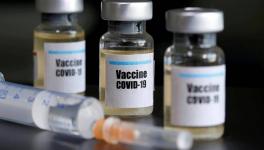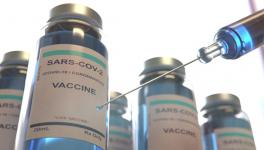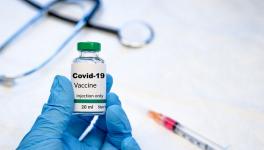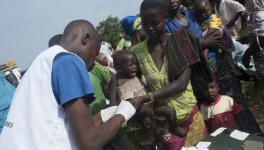Malaria Vaccine Research Shows Hope with New Candidate
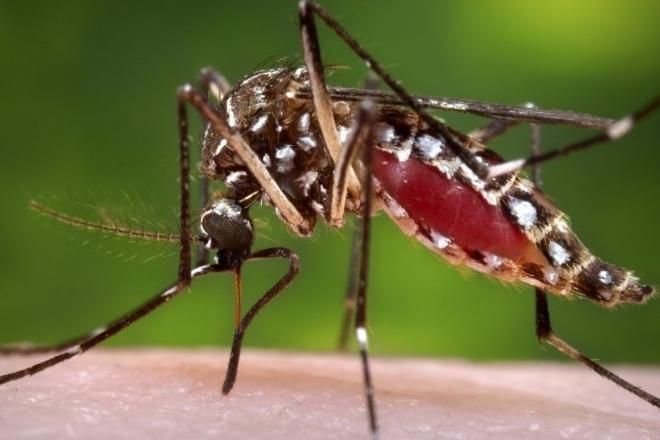
Image Courtesy: Financial Express
Just a few days back, we got encouraging news that there could be a possible vaccine against Malaria, a disease that kills half a million children a year. Named R21/Matrix-M, the potential vaccine has been developed by a team at the Oxford University and it showed 77% efficacy in a year-long trial conducted on 450 children in Burkina Faso. The results were published online in Lancet.
The team of scientists was led by Adrian Hill, the director of the Jenner Institute in Oxford University. Importantly, Hill is one of the lead researchers behind the COVID-19 vaccine developed by Oxford and AstraZeneca. Now, the team aims to conduct a larger final stage trial for the potential malaria vaccine among 4,800 children in four African countries.
In the words of Hill, “It is more effective than anything that has been reported on before. The World Health Organization wanted a 75% effective vaccine. This is the first time anyone has gone above that level. Really importantly, it can be manufactured at a large scale. So far, the vaccine looks safe.”
However, R21/Matrix-M is not the only vaccine candidate for malaria. There have been decades of efforts to build such a vaccine and another vaccine candidate that showed hope was the RTS, S. Back in 2019, children in few African countries including Ghana, Kenya and Malawi was receiving the RTS, S as a part of a pilot project. This vaccine candidate was the first one that showed to have offered protection against malaria in a phase 3 trial. Developed by GlaxoSmithkline, the RTS, S vaccine candidate was in development for 30 years.
The RTS, S vaccine candidate, over the course of its four-year-long phase 3 trial, prevented around 30% of serious cases of malaria. However, there was a serious caveat—the trial also showed that there was a rise in mortality among girls who were vaccinated. Adrian Hill, at that time was busy in developing the R21 vaccine. In a Nature interview, he was then quoted to have said on the trial result, “If that is real, that is the end of that story.”
Vaccine development against malaria is an incredibly tough challenge. Malaria is caused by parasites called plasmodium. When a mosquito carrying plasmodium bites a person, the plasmodium enters into the bloodstream. These tiny organisms can hide from the human immune system and can move from blood into the liver. They can burst from the liver cells in a new form and take over red blood cells. Handling these parasites are much more complex than bacteria or virus. For example, the Ebola virus has seven proteins whereas plasmodium has genes for 5000 proteins.
The RTS, S vaccine functions by introducing a fragment of a protein into the immune system. This protein fragment is present on the surface of plasmodium. Introduction of the protein fragment stimulates the production of antibodies against it. Remember, antibodies are a class of proteins that can attack a foreign substance like a bacteria, virus or parasite. They are also key drivers of killing those substances and hence, of enormous importance for the defense mechanism of the body.
The antibodies generated against the injected protein fragment of plasmodium in RTS, S vaccine candidate offered the body’s defense mechanism or immune system the ability to swiftly fight off the parasite when it enters the body next time. In fact, this is the primary principle of most vaccine developments—introducing a part or the whole (inactivated) of a pathogen (a virus, a bacteria or a parasite that can cause disease) into the body, the immune system develops fighting ability against the pathogen and when the pathogen really enters the body, then it can swiftly fight it back.
Malaria vaccine researches have been focused on a variety of strategies. Some are looking for ways to empower the immune system to attack plasmodium in the liver itself, that is before it comes out to take over red blood cells. Meanwhile, others have targeted the parasite in the red blood cells.
The RTS, S vaccine candidate empowered the immune system to produce antibodies against protein present on the surface of the parasite, but the parasite does not remain in that form for a long time. Within a small time after entering the bloodstream, the parasite can safely settle down in the liver; it can multiply inside the liver and after 7-10 days, it can emerge as 30,000 merozoite-stage parasite, each of which would be invisible to the RTS, S induced antibodies. The merozoite-stage signifies a reorientation of the parasite, which gives it the ability to penetrate into the red blood cells.
The R21 vaccine developed by Hill and his team takes up a slightly different strategy. It fuses together an antigen (a part of pathogen that can induce the immune system) from Hepatitis B and a protein from the plasmodium, which is much larger than in the RTS, S.
Another important malaria vaccine candidate is the PfSPZ, developed by Sanaria, a biotechnology company based in the United States. This vaccine took a different approach than the RTS, S and R21. This vaccine looked into how to generate an immune response (activating the defense mechanism) by means other than generating antibodies. Stephen Hoffman, who established Sanaria in the 1900s, developed a vaccine containing live parasites but weakened it by applying radiation. In this, the radiation-weakened parasite was plasmodium falciparum, a type of plasmodium and in fact the most dangerous among the plasmodium group. In people being injected with this vaccine candidate, the plasmodium falciparum went to the liver and stopped replicating after a few days and could not leave the liver cells. As the parasite remained in the liver stage, the immune system was supposed to learn how to fight future infections.
Sanaria says that its vaccine candidate showed 100% protection in studies. The problem with the vaccine candidate is it is specifically designed to fight infection from plasmodium falciparum, whereas, in endemic regions, malaria can be caused by other types, for example plasmodium vivax.
Adrian Hill, again in an earlier comment, was quoted to have said about the Sanaria vaccine that “it is non-manufacturable to even a few thousand people without huge expense. Storage and administration are problematic: in its current form, the vaccine must be transported in dry ice and delivered intravenously.”
Again, there is another group in Oxford University led by Simon Draper who is looking at a protein called RH5. This protein is vital in plasmodium falciparum to invade the red blood cells. The good thing with the RH 5 protein is that it is conserved and looks similar in almost every parasite of plasmodium family. Reportedly, one trial in UK, showed encouraging results against the RH5 protein with other big trials on the card.
Malaria vaccine research has sailed through crest and trough in its long journey. But hope remains about getting successful vaccines with modern technological advancements.
Get the latest reports & analysis with people's perspective on Protests, movements & deep analytical videos, discussions of the current affairs in your Telegram app. Subscribe to NewsClick's Telegram channel & get Real-Time updates on stories, as they get published on our website.









